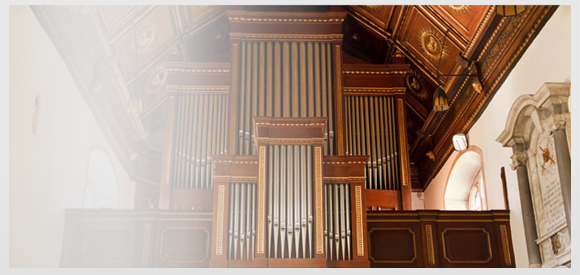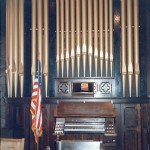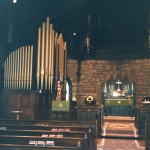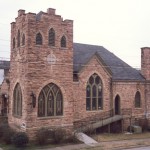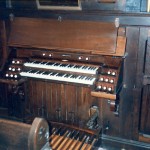Thankful Memorial Episcopal Church
In the latter part of the 19th century, a group of persons, mostly from St. Paul’s Church in downtown Chattanooga, sought and obtained permission “to teach children in the St. Elmo area the gospel of the Lord.” The initial meeting of the group was held at the home of Col. A. M. Johnson. The St. Elmo Protestant Episcopal Sunday School began in rented space in the St. Elmo Social Club on October 29, 1893. However, the place for worship continued to be at St. Paul’s. Construction for a house of worship, known as “the rock church,” for the Episcopalians of St. Elmo began in April 1904. The parish was named Thankful Memorial in memory of Col. Johnson’s wife Thankful Whiteside Johnson.
In 1866, Thankful Whiteside inherited from her father’s estate, a large plat of land on the rolling hillside of Lookout Mountain. After acquiring more land in the area and developing acreage for agricultural purposes, he planned and built “The House,” as it was known, overlooking the valley below. A friend of Thankful’s, Augusta Evans, a well-known novelist, said the area reminded her of St. Elmo’s castle from a novel she had written by that title.
After owning for seventeen years the land that was named St. Elmo, A. M. Johnson laid off suburban St. Elmo in one acre plats. When the fever and flooding of the summer of 1887 occurred, many citizens of Chattanooga wanted to escape the flooding that was a regular occurence each Spring. Those who could afford it built on the higher ground of St. Elmo. Others built their homes on Lookout Mountain and Missionary Ridge.
Thankful Whiteside Johnson died in 1890. When Col. Johnson died in 1903, he provided in his will “that …… after my death there shall be organized in manner as required by the Laws of the Protestant Episcopal Church of the United States of America a parish to be known as ….. Thankful Memorial Church of St. Elmo, Tennesse, which shall erect or cause to be erected there a church edifice …. to be known as the said Thankful Memorial Church of St. Elmo.”
Groundbreaking was held in February 1904, with much of the money for building the church provided through the will of A. M. Johnson. The church bell had been originally given to St. Paul’s in 1870. When “chimes” were presented to St. Paul’s in 1911, the old bell was loaned “in perpetuity” to Thankful Memorial, and still rings to this day. Several of the stained glass windows are from the Johnson house.
By 1950, the church’s growth had reached the point to where the mission church became a full-fledged parish of the Diocese of Tennessee.
The organ, Felgemaker’s Op. 495, was originally installed in Christ Church Cathedral, Nashville, in 1889. In 1894, a three-manual Farrand & Votey was installed in the cathedral. The Felgemaker was donated to Thankful Memorial. (Thankful’s history says that the organ was donated in 1920). Restorative repairs were made to the organ in 1987 by the J. F. Nordlie Co. of Sioux Falls. In September of 2004, the organ was removed by Nordlie for a complete restoration.
The history is taken from “Thankful Memorial Church – a Centennial Monograph,” written by Edward E. Cahill, Ph.D.
A. B. Felgemaker, Opus 495, 1889, 2/14
GREAT
8′ Open Diapason
8′ Melodia
8′ Dulciana
8′ Unison Bass
4′ Octave
2 2/3′ Twelfth
2′ Fifteenth
SWELL
8′ Open Diapason
8′ Stopped Diapason Bass
8′ Stopped Diapason
8′ Aeolina
4′ Flute Harmonique
8′ Oboe
PEDAL
16′ Bourdon
Couplers: Swell to Great, Swell to Pedal, Great to Pedal (with toe
reversible)
Combination Pedals: Great Forte (activates all Great stops), Great Piano
(activates Melodia, Dulciana and Unison Bass – cancels all others)
Miscellaneous: Pedal Check, Bellows signal (now blower switch), Tremolo
Manual Compass – C-c'”, 61 notes
Pedal Compass – C-d’, 27 notes
Stoplist courtesy of www.organtek.com with information provided by John
Brock
